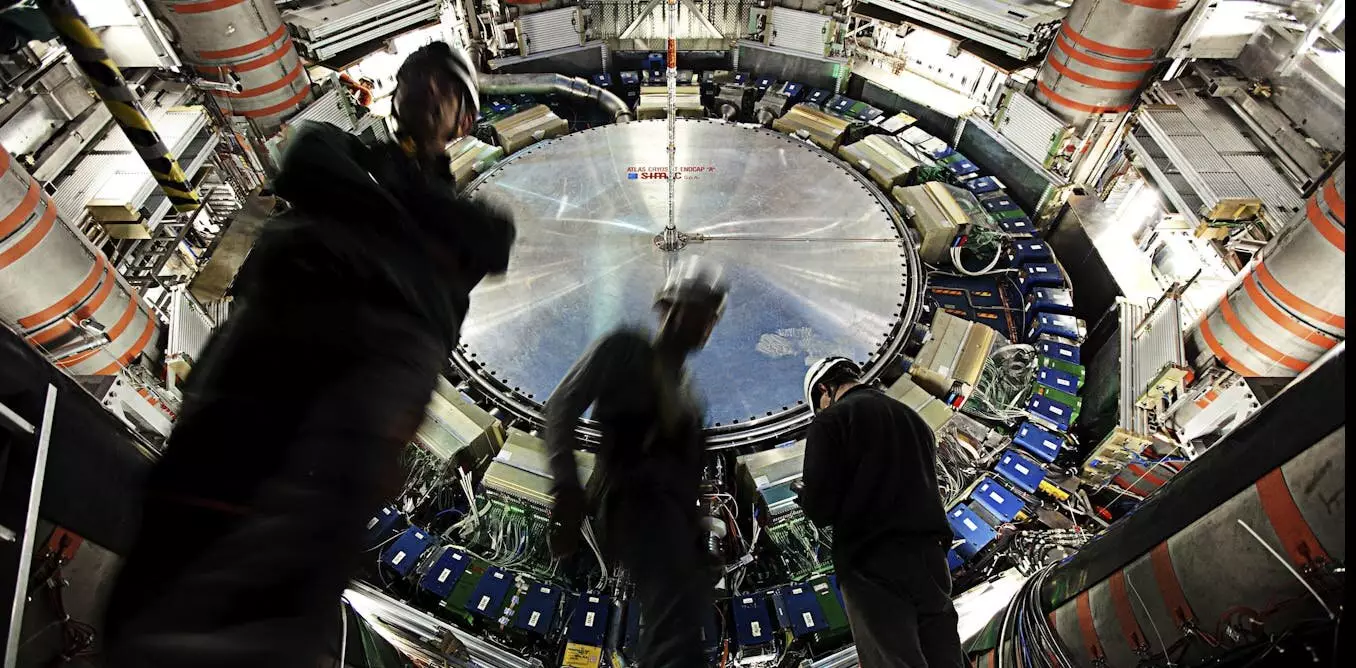Quantum entanglement is one of the most fascinating phenomena in the realm of physics, presenting a stark deviation from classical perceptions of separateness and connection between objects. In conventional terms, we classify items as either disconnected—such as two spheres positioned one kilometer apart—or connected, like two spheres tethered by a string. However, entangled particles defy these classifications, creating a unique interrelationship that exists independent of physical proximity. Notably, entanglement manifests in how the state of one particle instantaneously correlates with that of another, irrespective of the distance separating them. This peculiar entanglement has intrigued physicists since its theoretical inception and was empirical demonstrated in experiments involving photons in the late 20th century.
The potential applications of this quantum phenomenon stretch far beyond the laboratory. In popular culture, the idea of entanglement has even permeated science fiction literature, most notably in Liu Cixin’s “3 Body Problem,” where alien technology leverages quantum entanglement to communicate across vast distances. Such fantastical portrayals, while creatively engaging, often misconstrue the fundamental tenets of quantum mechanics, particularly the fact that entanglement does not permit faster-than-light communication. Despite its allure, entanglement remains a strictly quantum property with no current applications for superluminal messaging.
Recent breakthroughs observed at CERN’s Large Hadron Collider (LHC) signify a new chapter in entanglement research. In a study conducted by the ATLAS collaboration, researchers have successfully identified entanglement between pairs of top quarks, which are the heaviest known particles. Published in the esteemed journal Nature, this significant discovery extends the application of entanglement to high-energy physics. Traditionally, entanglement has been examined in low-energy environments, yet the manifestation of entanglement in top quarks opens up new avenues of exploration for particle physicists.
The fundamental understanding of matter informs us that atoms, which constitute all matter, consist of a nucleus surrounded by orbiting electrons. Within this nucleus are protons and neutrons, which are themselves composed of quarks. Among the six different types of quarks, the top quark stands out due to its extraordinary mass, approximately 184 times heavier than the proton. Currently, the reasons behind the top quark’s massive weight remain shrouded in mystery. Its study at the LHC could reveal insights into unknown forces or phenomena within the universe, subjecting our current understanding of physics to potential revision.
Delving into the nuances of entanglement exposes its inherent fragility. Quantum systems are sensitive to their environments, often requiring ultra-cold conditions to minimize disturbances that can disrupt entangled states. This makes it increasingly challenging for physicists to maintain the integrity of entangled states when working within practical applications. Although entanglement appears to be a common phenomenon under controlled conditions, it becomes significantly less reliable as systems increase in complexity or temperature.
While the observation of entangled top quark pairs is exhilarating, it does not immediately translate into viable technological innovations. The impracticality of working with the LHC limits the possibility of employing top quarks in everyday applications. Nevertheless, their unique qualities enable researchers to examine entanglement in unprecedented ways, contributing to a deeper understanding of the quantum realm.
The significance of entangled top quarks extends beyond curiosity; it may pave the way for future inquiries into the fabric of reality itself. By closely analyzing the behavior and interactions of the top quark, scientists could potentially uncover new physics that challenge the completeness of our existing theories. Questions surrounding the top quark’s exceptional mass and the forces acting upon it may unlock a broader understanding of universe, providing clarity to the myriad of enigmas that quantum physics encompasses.
The discovery of entanglement in top quarks represents a seminal moment in physics, inviting ongoing discussion and experimentation. The challenges inherent in studying this enigmatic phenomenon only amplify its intrigue. As researchers forge ahead, we may be on the brink of breakthroughs that reshape not only quantum mechanics but also our general understanding of the universe. The journey into the quantum unknown continues, with entanglement illuminating paths yet to be explored.


Leave a Reply